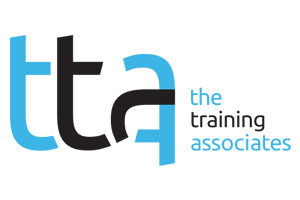Difficult conversations are inevitable in leadership, whether it’s addressing performance concerns, giving tough feedback or resolving conflicts. Although no one looks forward to them, these discussions don’t have to be painful, confrontational or morale crushing. The key to making them easier is the groundwork laid long before the conversation even happens.
When trust and rapport are already in place, conversations — no matter how difficult — feel less like corrections and more like collaborations. People are more open to hearing feedback when they believe it’s coming from someone who has their best interests in mind. They’re less likely to be defensive, more willing to engage and better equipped to navigate challenges without feeling blindsided.
One of the most effective ways to create that foundation is by ensuring there’s never confusion about what’s expected in the first place.
Establish Clear Expectations Early
No one likes to be blindsided, and that’s exactly what happens when expectations aren’t clear from the start. If employees don’t fully understand what success looks like in their role, then any tough conversation about performance is going to feel unfair — even if it isn’t. By setting expectations early and reinforcing them consistently, leaders create a shared foundation to refer back to when things aren’t going well. Instead of an awkward or confrontational discussion, the conversation shifts to a constructive dialogue: “Here’s what we agreed on, and here’s where things are off track. Let’s work together to fix it.” When people know what’s expected, they’re more likely to course-correct before a situation escalates into a truly difficult conversation.
How to put this into practice:
- Set expectations in writing: Provide clear job descriptions, project goals and performance benchmarks from the start.
- Explain the “why” behind expectations: People commit more when they understand how their work impacts the team and company.
- Provide examples of what “good” looks like: Share past successful work or role models to help employees visualize expectations.
- Reinforce expectations in regular check-ins: Keep expectations top of mind through structured one-on-one meetings and team discussions.
Be Approachable and Available
The leaders who struggle the most with difficult conversations are often the ones who rarely engage with their teams outside of those moments. If the only time you talk to an employee is when there’s a problem, every conversation with you will feel like bad news. On the other hand, leaders who are accessible — who check in regularly, make time for casual conversations and genuinely listen — build relationships that make tough discussions easier. Employees are far less likely to become defensive when they see their leader as an ally in their success rather than just a critic. Plus, when people feel comfortable bringing up concerns early, you can often prevent problems from reaching the point where a difficult conversation is even necessary.
How leaders can foster openness:
- Respond to messages in a timely manner: A leader who is hard to reach creates a perception of indifference.
- Create informal touchpoints: Grab coffee with employees, join a casual lunch or check in before meetings start.
- Follow through on promises: Being approachable isn’t just about listening — it’s about taking action on concerns.
- Be transparent about decisions: If you don’t have an answer, say so. Employees respect honesty over vague reassurance.
Understand Workplace Challenges and Support Employee Well-Being
It’s hard to have a productive conversation about performance or accountability if employees feel like leadership doesn’t understand what they’re up against. Are unrealistic workloads, outdated processes or unclear priorities getting in their way? Are personal stressors impacting their ability to perform? Leaders who take the time to understand these factors build credibility, making it easier to have open, honest discussions when challenges arise. Instead of “You need to do better,” the conversation becomes “I see you’re struggling. Let’s figure out why and how to address it together.”
When people feel supported, they’re far more likely to engage in problem-solving rather than shut down or push back.
Ways leaders can show they understand and support their team:
- Ask employees about obstacles they face: Regularly check in on workload challenges, resource gaps or unclear expectations.
- Acknowledge workplace stressors: If workloads are high or company changes are stressful, validate that reality instead of ignoring it.
- Address systemic issues that impact performance: If outdated processes or unclear expectations are roadblocks, advocate for change.
- Encourage work-life balance: Support reasonable workloads, flexible scheduling, and time off when needed.
Be Consistent and Fair in Decision-Making
One of the fastest ways to create tension in a difficult conversation is to have an employee feel like they’re being singled out unfairly. If your leadership decisions seem inconsistent — if expectations shift unpredictably, if feedback is only given sporadically or if some team members are held to different standards than others — people will resist your input.
However, when leaders are clear, fair and even-handed in how they apply expectations and provide feedback, difficult conversations don’t feel like personal attacks. Employees are more willing to hear tough messages because they trust the process. Instead of wasting time defending themselves or pushing back against perceived bias, they can focus on how to move forward.
How to lead with fairness and clarity:
- Apply rules and expectations equally: Avoid favoritism by ensuring everyone is held to the same standards.
- Address issues promptly: Don’t let small problems fester into bigger ones that require a more difficult conversation.
- Ensure leadership alignment: If multiple managers give different messages, it creates confusion and mistrust.
- Solicit input when appropriate: When employees feel involved in decision making, they’re more likely to respect outcomes.
Recognize Achievements and Show Gratitude
If the only time someone hears from their leader is when something goes wrong, they’ll start to associate every interaction with negativity. No one wants that. Recognizing achievements — both big wins and small daily contributions — builds goodwill, strengthens relationships and reinforces what success looks like. When people feel valued, they’re much more open to receiving constructive feedback because they know their leader sees their strengths, not just their shortcomings. A difficult conversation doesn’t have to be all about what’s wrong; it can also be framed as “I know what you’re capable of, and I want to help you get there.”
Ways to make recognition meaningful:
- Recognize efforts, not just outcomes: Acknowledge hard work even when projects don’t go perfectly.
- Publicly recognize team members in leadership meetings: Give employees credit in conversations with higher-ups to help elevate their work.
- Encourage peer-to-peer recognition: Build a culture where employees recognize and appreciate each other’s contributions.
- Offer development opportunities as recognition: When appreciation is built into workplace culture, employees feel valued and motivated.
Leadership can no longer be about sitting high in a tower, only descending to issue decrees or instill fear among employees. That outdated model, where leaders remain distant, detached and only engage when there’s a problem, breeds nothing but resentment, resistance and uncertainty. The modern workplace demands something different: leaders who walk among their people, not above them.
Difficult conversations are part of leadership, but they don’t have to be feared moments of dread. When leaders invest in consistent communication, fairness and genuine appreciation, those tough discussions become easier — not because the topics are any less challenging, but because the foundation of trust is already there. Instead of feeling like a ruler passing judgment, the leader becomes a guide helping their team navigate challenges. Instead of rebellion, there’s collaboration.
The best leaders don’t rule from a tower — they walk among their people, building trust in the moments that matter most.









